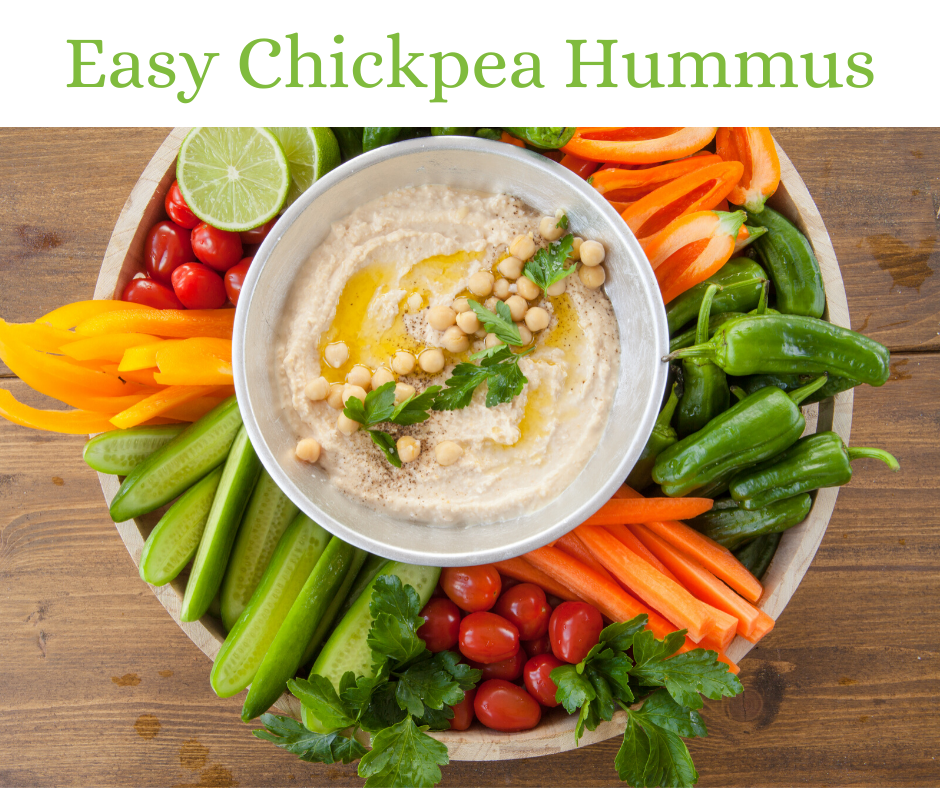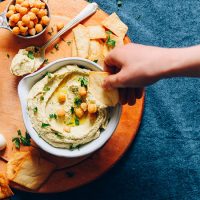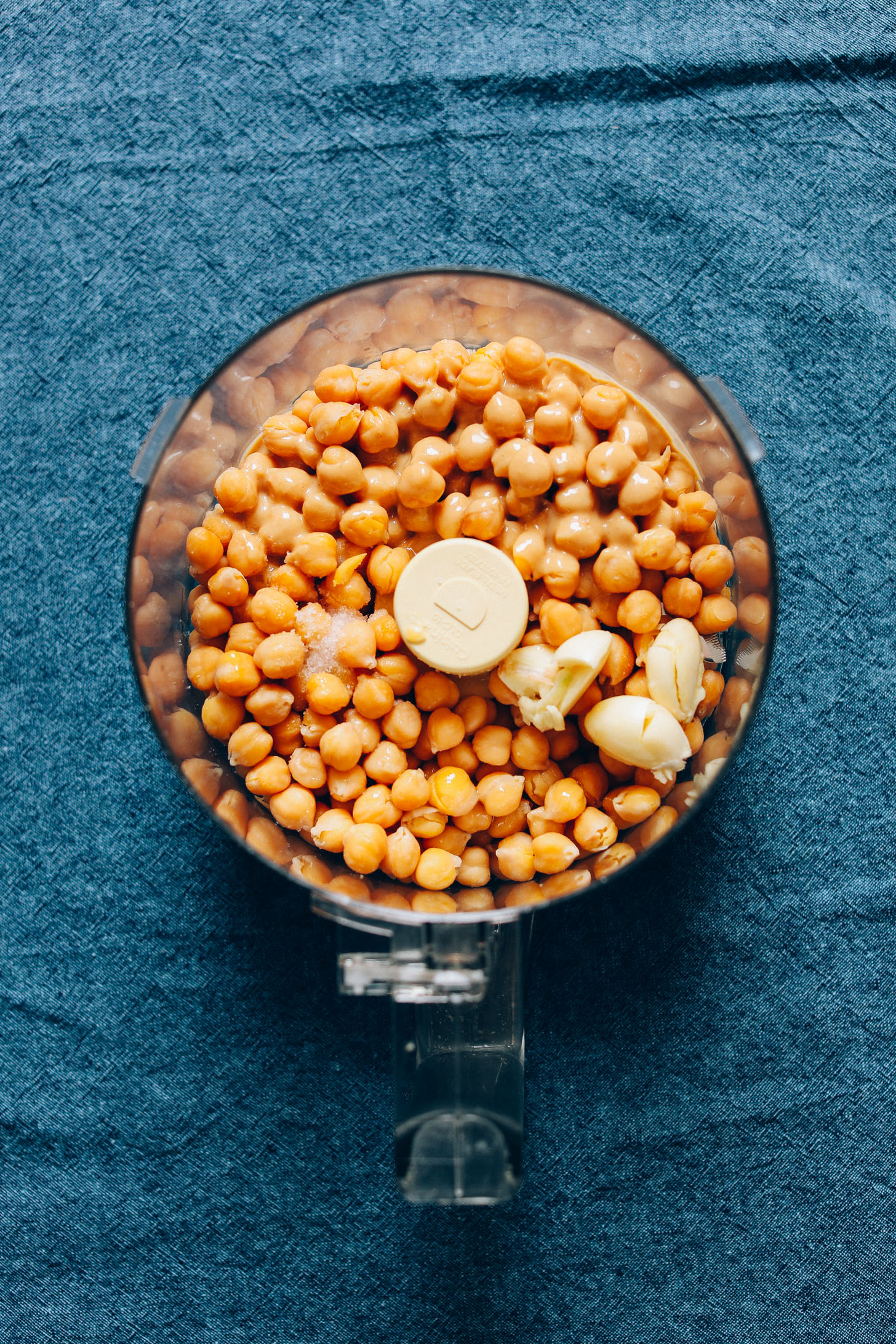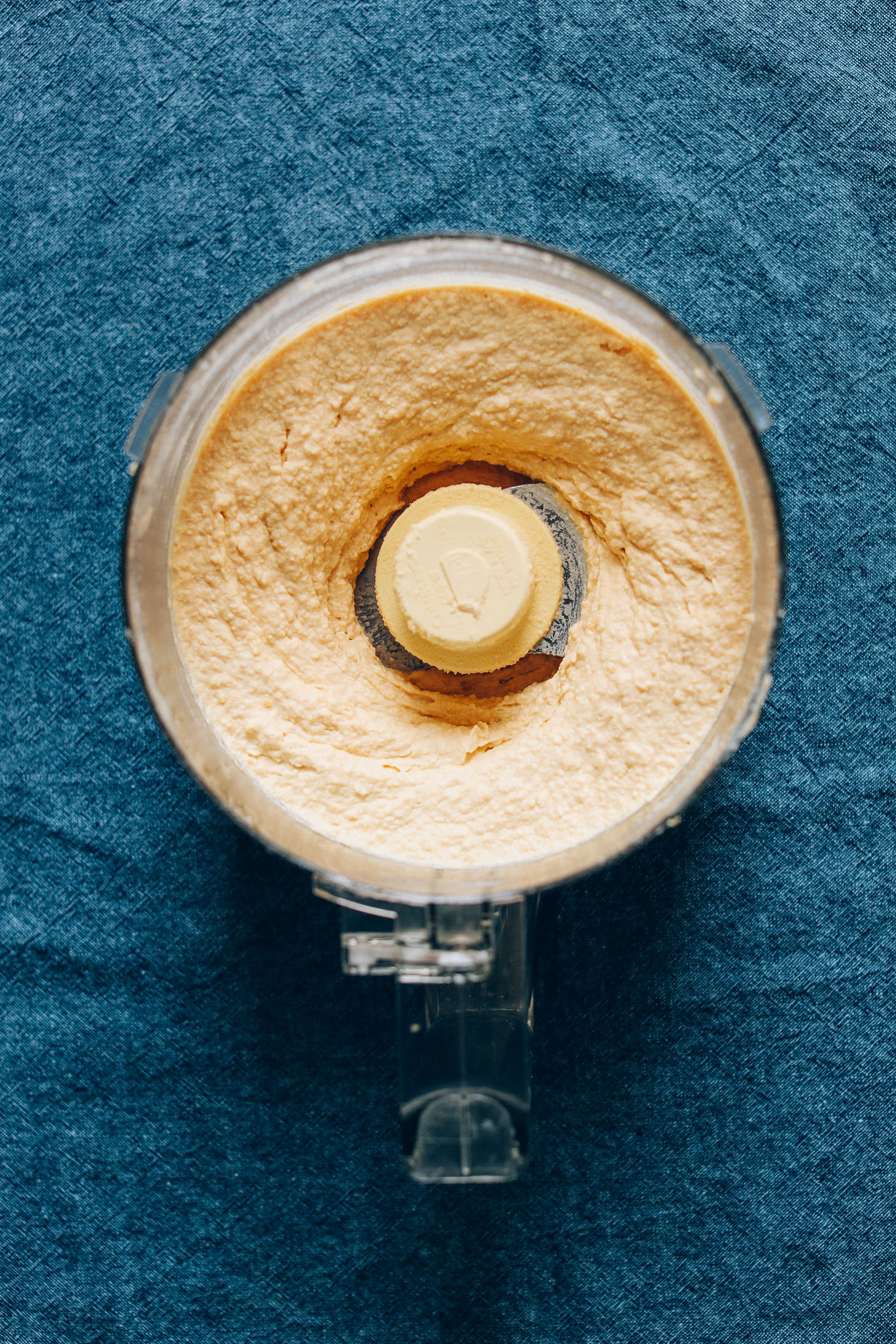Once you master the art of cooking beans, the world is your oyster. You can save money, control the ingredients you add to your food, and generally feel like a boss in the kitchen.
With that in mind, allow us to demonstrate how easy it is to make your own hummus — from scratch!
Like many foods, the exact origin of hummus is debated. But it’s believed that the first recipes appeared in 13th century cookbooks (source).
Hummus is an Arabic word that simply means “chickpeas.” And chickpeas have been grown in the Middle East and India for thousands of years.
Hummus bi tahini (but often just referred to as “hummus”) is made with chickpeas, tahini, garlic, and lemon. It’s a common dish in Turkish, Lebanese, Syrian, and Egyptian cuisine, among others. And it’s now gained popularity throughout the world.
Those looking for a deeper dive into the history of hummus can find more information here and here.
Our recipe strays a bit from traditional, adding kombu to aid digestion, baking soda for a creamier texture, and garlic powder and fresh herbs for additional flavor. You can find more traditional preparations here and here.
Boiling Chickpeas for Hummus However, many stores offer them in dried form—and in that case, you do need to soak or cook chickpeas for hummus, in order to soften them enough for blending into hummus’ signature creamy texture. Soaking is a common alternative to boiling chickpeas for hummus.

How to Make Hummus From Scratch How to make hummus from scratch with simple methods and 6 wholesome ingredients. Creamy, garlicky, hearty, and big in flavor! Customizable, easy to make, and a classic recipe to have on hand!

- 1 cup chickpeas* (uncooked / dry)
- 1 strip kombu (seaweed for improved digestion // optional)
- 1/4 tsp baking soda (for creamier texture // optional)
- 3 cloves garlic (crushed + skins removed)
- 1/3 cup tahini
- 2 Tbsp lemon juice
- 3/4 tsp sea salt
- 1 Tbsp olive oil (if avoiding oil, sub water or more lemon juice)
- 1 Dash garlic powder (optional)
- 1/4 cup fresh herbs (such as cilantro, parsley, or basil // optional)
- Pita chips
- Cucumber
- Red bell pepper
- Add (uncooked) chickpeas to a large pot and cover with 2 inches water. Bring to a boil over high heat and boil for 1 minute. Then cover, remove from heat, and let sit for 1 hour. This is a quick method. Alternatively, soak overnight or at least 6 hours in cool water.
- Drain and rinse chickpeas and add back to the pot. Cover with 2 inches water and add kombu (optional) for improved digestibility and baking soda (optional) for creamier texture (a reader tip!).
- Bring to a boil. Then reduce to a simmer and cook uncovered for 45 minutes to 1 hour or until tender (but not mushy). Remove kombu and discard. Drain. NOTE: You can optionally remove the skins from the beans at this point for creamier texture, but we dont have the patience for that.
- Add cooked chickpeas to a food processor or high-speed blender (a blender will get creamier texture!) along with garlic, tahini, lemon juice, sea salt, and olive oil (or water). Blend until creamy and smooth, scraping down sides as needed.
- At this point, you can add garlic powder and herbs (optional). Blend and taste. Adjust flavor as needed, adding more salt for saltiness, lemon juice for acidity, garlic for “zing,” tahini for nuttiness, or fresh herbs for color and herbal flavor.
- If the hummus is quite thick, add water (or additional oil) to thin until a creamy dip has formed. Enjoy as is with vegetables, pita, or crackers. Leftovers will keep stored in the refrigerator up to 1 week (not freezer friendly — best when fresh).
How to Make Hummus From Scratch
This 6-ingredient recipe starts with quick-soaking your chickpeas — which takes about 1 hour. And then cooking, which takes 1 more hour. Just like that you went from dry chickpeas to cooked chickpeas in 2 hours. You’re already a pro!
Once your chickpeas are tender, drain and add them to a food processor. Throw in some garlic, tahini, lemon juice, and salt — the basics. A little olive oil adds creaminess and flavor, but it can be subbed with water if you’re avoiding oil.

Blend until creamy and smooth. Then add in fresh herbs or any other flavor you crave: think roasted jalapeño, roasted red pepper, lots of basil, lots of cilantro, or even curry paste! The sky is the limit.

We hope you LOVE this hummus! It’s:
Creamy Hearty Lemony Garlic-infused Easy to make Customizable & SO delicious
Keep this hummus on hand when you need a quick snack or spread. Our favorite way to enjoy hummus recently has been on top of gluten-free toast. Spread with hummus and then top with mashed avocado, nutritional yeast, and pepper flake! Next-level avocado toast!
If you try this recipe, let us know! Leave a comment, rate it, and don’t forget to tag a photo #minimalistbaker on Instagram. Cheers, friends!

How to Cook Dried Chickpeas (Ultimate Guide)
FAQ
Do chickpeas need to be boiled?
Should canned chickpeas be cooked for hummus?
What happens if you don’t cook chickpeas?
Do I need to boil chickpeas after soaking?
Can You boil chickpeas for hummus?
Soaking is a common alternative to boiling chickpeas for hummus. This method requires putting chickpeas in a large pot along with at least twice their volume in water, and then covering them and letting them sit overnight. When the beans are tender, they are ready for blending! However, sometimes you’re tight on time.
Is hummus healthy to eat?
Making hummus is a fun way to introduce more protein, fiber, and plant-based nutrients into your diet. In addition, the food has other substances that act as antioxidants such as vitamins and folic acid.
Can you cook canned chickpeas for hummus?
Overcooking the chickpeas just a bit gives you creamier hummus! So, even if you’re using canned chickpeas, give them a brief 20 minute simmer so they will be well cooked and tender. Peel the chickpeas. Chickpea skins are edible, but if you want creamy hummus, peel the chickpeas and discard the skins.
Do you need to soak chickpeas for hummus?
Most people buy chickpeas in cans or bags. These wet chickpeas have been dried and then boiled already, so they are ready for making hummus. However, many stores offer them in dried form—and in that case, you do need to soak or cook chickpeas for hummus, in order to soften them enough for blending into hummus’ signature creamy texture.
